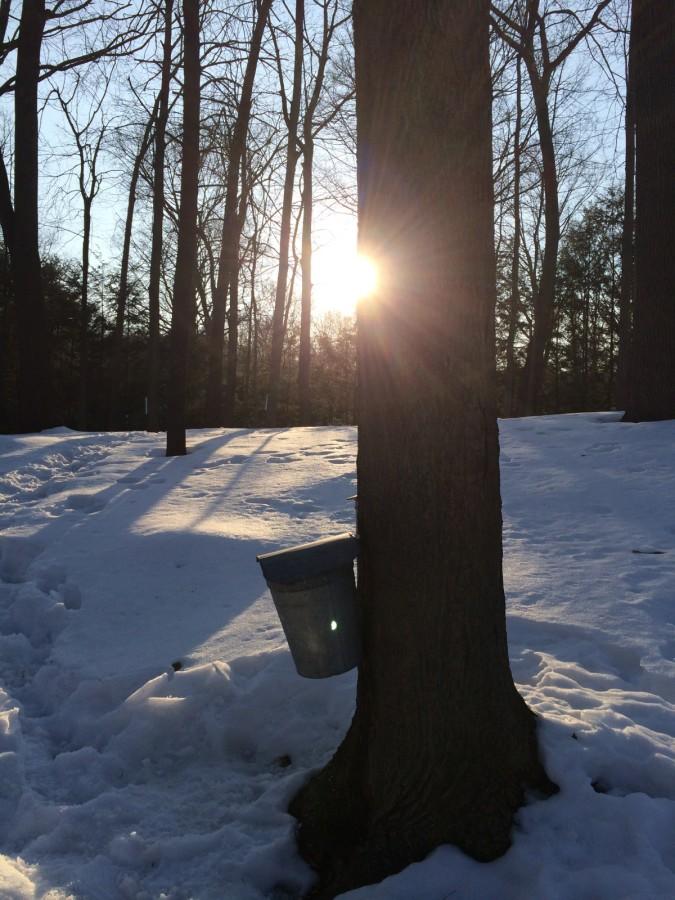New England Tradition on Hold Due to Weather
The Herald gets a little “sappy” – might this winter’s cold spell mean trouble for one of our favorite breakfast condiments?
A spring tradition to many in New England has yet to take off: making maple syrup. From small backyard operations, to full out business operations, and even the small country sugarhouses; this winter’s brutal cold has put syrup production on the back-burner. Some people see the arrival of maple syrup production as the end of winter and beginning of spring. But with gigantic amounts of snow and frigid temperatures the spring tradition will just have to wait.
While many people reap the benefits of natural and sweat maple syrup on their pancakes and waffles, not many know the grueling work that goes in the process of making the sugary delight. Hours of hard work and much waiting go into every bottle of syrup. The optimal conditions for maple syrup production is when the temperature gets under 32 degrees at night and over 32 degrees during the day.
This is good because at night the sap, a sugary water substance that excretes from the tree, gets down into the ground. During the day, as the tree heats up, the sap runs to the warmer part of the trees to the forming buds. This is when the sap is collected.
To collect the sap, one must find maple trees preferably Sugar Maple trees and then drill a small hole on the tree on the sunny side of the tree. Then, you insert a tap into the tree where you can hang the bucket off of. You then wait for the sap to “run” up and down the tree where it will drip into the bucket. After a while of the bucket being filled you go and collect the sap.
It takes nearly 40 gallons of sap to make one gallon of syrup so a lot of sap is needed to make a good amount of syrup.
After collecting a good amount of sap the boiling process takes place. The sap is boiled in a complex pan. After hours of boiling and when the sap reaches about 220 degrees or even a few degrees higher on certain days. Then you do a hydrometer test where a weighted test tube is placed in a sample of the syrup and if it floats and reaches a certain line its syrup, it’s done, and needs to be drawn off.
This tradition of making maple syrup is practiced all throughout New England from the iconic Vermont Maple Syrup and in some cases goes back generations in generations. The lack of any temperatures reaching over 32 degrees lately during the day has prevented people from starting to tap their trees. Leaving some to wonder how long the season will be this year, as once the weather gets too warm the sap no longer runs up and down the tree.
James Antil, a backyard maple syrup hobbyist, feels that“The cold weather has caused a delay to the season and is making the end of winter seem longer than usual as boiling breaks up the day and speeds up the days leading up to spring.” Usually the last weeks of winter are see with buckets lining maple trees and offers hope that the frigid days.
With a hopeful break in the cold weather this week, the days of sugar houses sending out their sweet delights to all may soon be back upon us.













